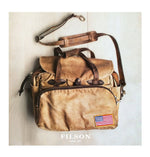
If I had to describe John Lofgren in one word it would be “uncompromising”. I’ve never designed and manufactured a shoe (although I did once knit a child’s boot from coloured wool) but it doesn’t take much to imagine the countless production pitfalls, complications and unforeseen costs that would drive one to adapt seemingly small details in favour of ease or affordability. John Lofgren laughs in the face of adversity and has spent the majority of his life back and forth between Japan and the States, carving out relationships, sourcing materials and honing his trade, all with a view to create the finest possible end product. Mr Lofgren is one of a handful of remaining auteurs of the shoe world.
A California native, Lofgren now resides in Japan; a heralded figure amongst those in the know. As well as manufacturing footwear and owning his own shop, he also operates the Nigel Cabourn Army Gym store in Sendai. And to think…Sometimes I can’t even find time to make my own dinner…
 John Lofgren Engineer Boots - Natural CXL
John Lofgren Engineer Boots - Natural CXL
To borrow some words from the man himself; “My interest in “Made in Japan” is not born out of some notion of superiority — although there are cases, such as Japanese denim, where such assertions would carry weight — but rather from a simple, basic wish to keep craftspeople employed at doing what they do best.
Sprinkled around the countryside of Japan are factories employing local artisans, technicians and labourers, all of whom are fortunate enough to be making a living wage while taking pride in their work. This is important and beneficial on every level”
Originally designed for railroad workers, the Engineer Boot first rears it’s head during the Great Depression in mid-thirties America. By 1940 the boots were a staple for the working man, the stove pipe calf offering ample protection from rocks of coal and the sharp edge of a shovel. The silhouette is a hybrid - somewhere between a logger boot and an English riding boot. It is instantly recognisable from it’s high calf, buckled ankle and often a buckled calf. Traditionalists will tell you the only colour to mess with is the blackest black, but Lofgren’s Natural Chromexcel leather versions make a pretty strong case for themselves, too.
 Marlon Brando - Engineer Boots - the Wild One 1953
Marlon Brando - Engineer Boots - the Wild One 1953
Despite a brief hiatus during WWII, when manufacturing companies predominantly churned out lace-up combat boots, the Engineer Boot remains ‘as Americana as the 5 pocket jean.’ Post-war the boot was adopted by motorcycle counter culture. Aside from it’s obvious practical benefits and protection, it helped, no doubt, that the boots looked 100% badass. As with so many classic American pieces, the Engineer Boot’s place in history was solidified by the likes of Marlon Brando and James Dean.
 John Lofgren Engineer Boots
John Lofgren Engineer Boots
There are a number of companies offering their own iteration of the classic Engineer style, but these tend to feel like watered down versions against the pure goodness Mr Lofgren is cooking up. Where others fill space amongst a vast line up of footwear, John’s repertoire is reserved and necessary; allowing each style the time and attention it deserves. On average each shoe is sampled up to 5 times and field tested for up to a year before reaching the shelves. No detail is too fine. Feast your eyes on this impressive and extensive features list;
*inhale* Built on original John Lofgren lasts, American Horween Chromexcel leather, Oak bark tanned leather stacks with woodsman's heels, American made Vibram 705 soles & 700 heels, Australian made pressed steel buckles, Japanese made steel shanks, British made Goodyear storm welting, Triple stitched on heavy stress areas, Double stitched arched straps, Keystone stitches shaft straps, All straps are unskived and functional, Hand-stitched shaft seam, Made in Japan.
Not convinced? No problem. Come and see the real things in store. Just make sure you bring your wallet…


